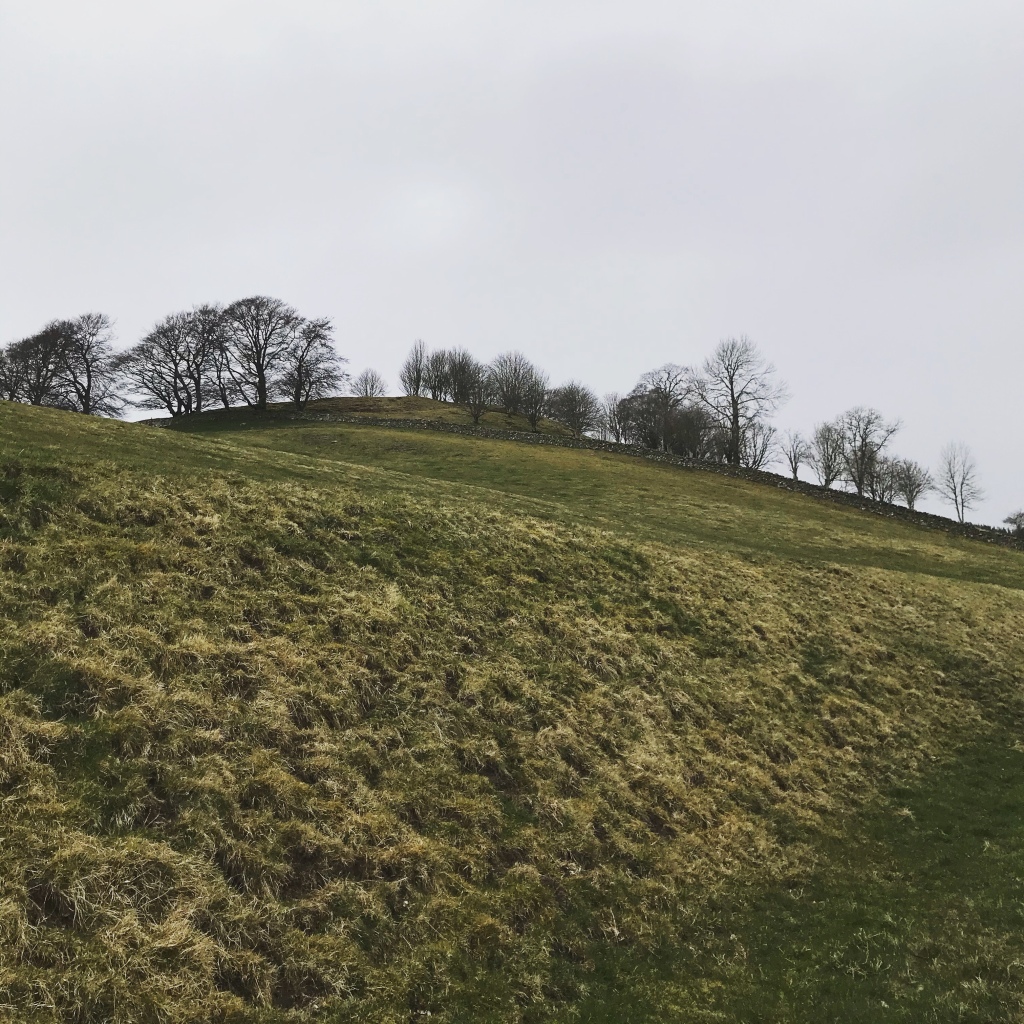We are very lucky to live in a beautiful, peaceful place while the current limitations on travel exist. I hope before too long we’ll be on our way again and life will return to some form of normality, after this dreadful virus has been contained. However, lockdown has allowed us to explore our village and nearby places. I’ll share some views of them and stories from here with you over the next few days but to begin with, here’s a little about Hodge Cairn fort.

According to the wonderful PastMap, Hodge Cairn is the site of the remains of a large prehistoric oval fort on the slope of White Hill. Obscured over the centuries by farming and tree planting, there’s enough left to spot from the roadside, which I did, puffing up a hill on my bike during my daily exercise.
There are wonderful views of the ramparts and ditches which remain here, which clearly show the remains of the ancient buildings that were once inside. There are dozens of similar hillforts and medieval farmsteads in the hills surrounding the Gala Water, reaching back to the very early history of the land, before the Legions of Rome would arrive. The ancient peoples who lived here would have known the vast Ettrick Forrest that once covered these hills, clearing many trees to make way for the their homesteads and forts like this.
When the Romans arrived in the First Century, they called the inhabitants of this land the Votadini. Later, this Latinised name would be recorded in Old Welsh, the local tongue, as Guotodin, then Gododdin. This part of what is now Scotland was the territory of the ancient Cumbric-speaking Britons – the ancestors of the modern Welsh, Cornish and Bretons and cousins of the Picts.
The Welsh would come to tell tales of Yr Hen Ogledd – The Old North – when remembering their ancestors here. Indeed, one of the earliest poems to have survived in Britain, Y Gododdin, recalls the people of this ancient kingdom. Supposed to have been written by the bard Aneirin, perhaps court poet to the Gododdin, it recalls the bravery and defeat of the Men of the North in battle c. 600 AD against the Angles of the south. The poem may also include the earliest reference to King Arthur as a paragon of bravery, although this is argued over. From their fort at Din Eidyn (now Edinburgh), the warriors travelled south, to annihilation at the hands of the Angles, a battle which saw the kingdom of the Gododdin disappear into the Angles’ Northumbria. It’s a (very!) long poem, but worth a look.
In later times, the Guardian of Scotland, William Wallace, launched guerrilla attacks on the English invasion forces from Ettrick, during the first Wars of Independence.
There is so much history in this part of Scotland, hidden beneath the grass of the rolling fields in now tranquil countryside. I’ll share more with you again soon.
Peaceful, stark contrast to the world out there. Thanks for sharing.
LikeLiked by 1 person
Thank you. A little moment of calm.
LikeLiked by 1 person
Thank you, I enjoyed reading your blog.
LikeLiked by 1 person